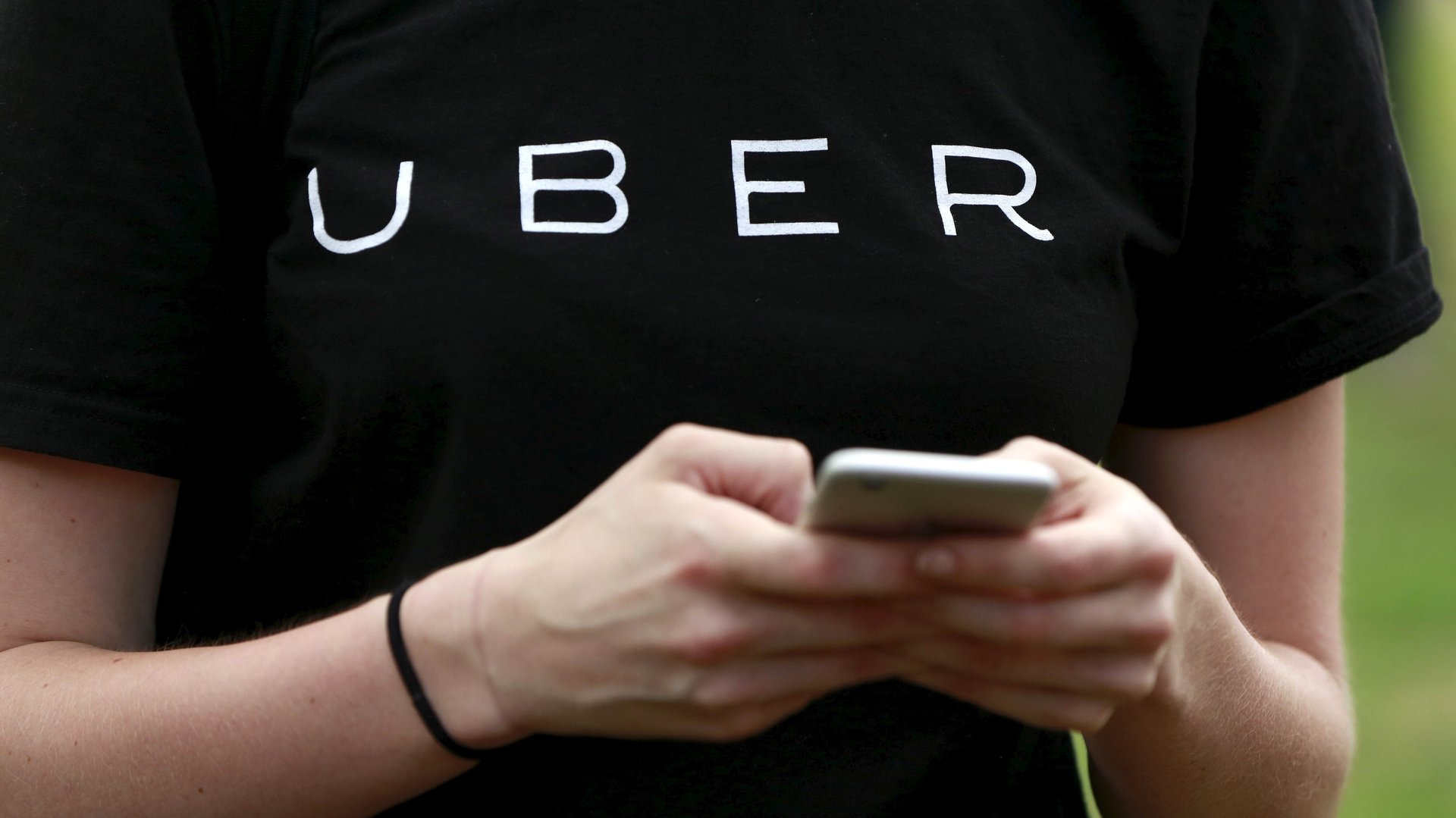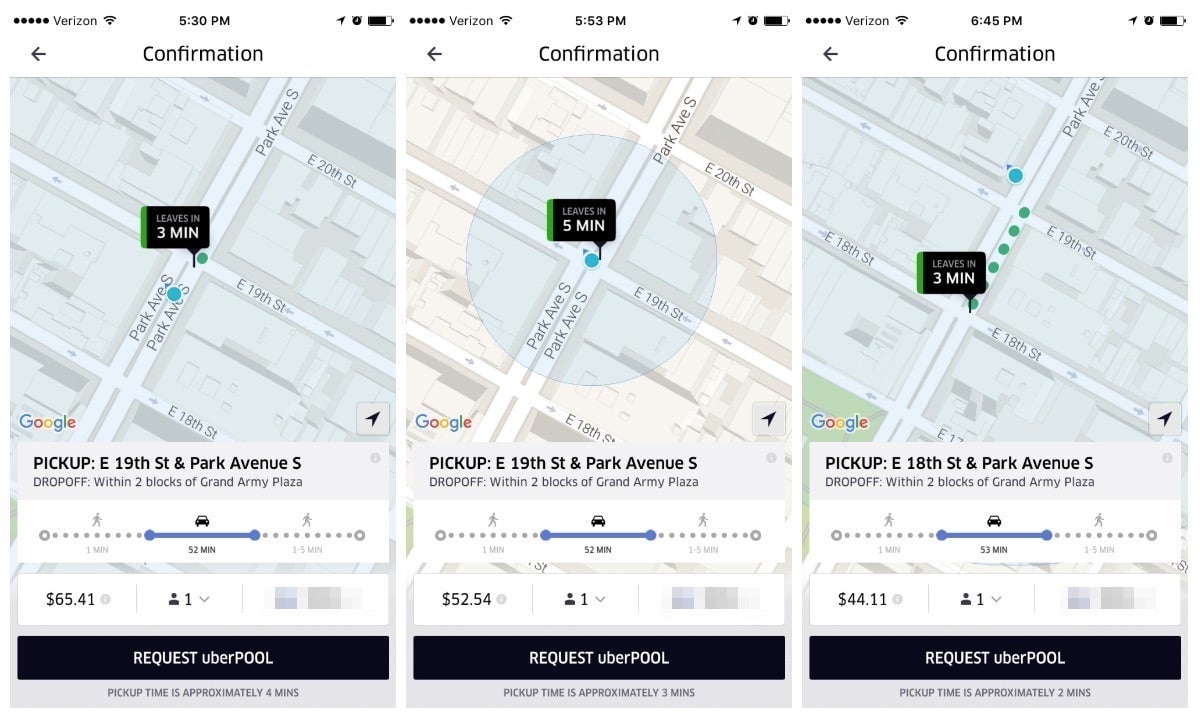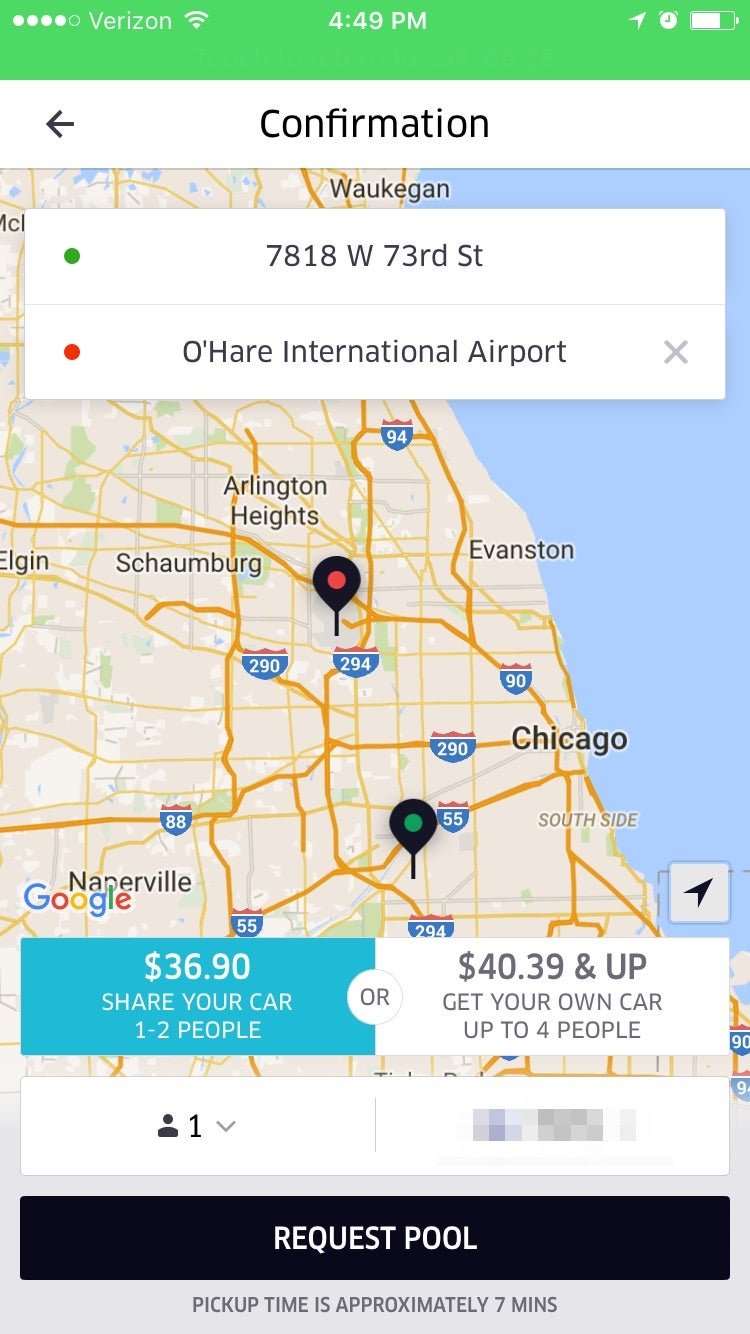Uber has quietly started to end surge pricing as we know it
By this point, frequent Uber users are probably familiar with Pool, the company’s pseudo-carpooling service. UberPool works by finding riders who are heading along similar routes and grouping their trips together. A driver might pick up you, and then another passenger, and maybe even a third, before dropping you off at your destination. For this inconvenience and added human interaction, Uber promises Pool riders fixed fares, often at steep discounts to what it charges for private cars.


By this point, frequent Uber users are probably familiar with Pool, the company’s pseudo-carpooling service. UberPool works by finding riders who are heading along similar routes and grouping their trips together. A driver might pick up you, and then another passenger, and maybe even a third, before dropping you off at your destination. For this inconvenience and added human interaction, Uber promises Pool riders fixed fares, often at steep discounts to what it charges for private cars.
But there’s an even more important detail about Pool that’s often overlooked: It doesn’t show riders surge pricing. Ever.
That’s not to say the prices don’t change, or, to use Uber’s terminology, aren’t dynamic. The other day, for instance, I tried requesting an UberPool from the Quartz office in Manhattan’s Flatiron neighborhood to Grand Army Plaza in Brooklyn at various points throughout the evening. At 5:30pm, Uber quoted the price of this trip as $65.41. By 5:53pm, the fare had dropped to $52.54. Another 45 minutes later, the amount was down to $44.11. On all three occasions, surge multipliers were in effect on Uber’s other ride services—UberX and UberBlack—but there was no such signature lightning indicator on Pool.

“UberPool surges/is priced dynamically, but you get a price quote and not a multiplier,” Uber New York general manager Josh Mohrer wrote me in an email. “So is that ‘surge pricing?’ Yes and no.”
Uber declined to comment on whether its other services might shift to Pool’s pricing model, but in at least one city they already have. Drop your pickup pin in Chicago, and Uber will first ask you to enter a destination, then select how many seats you need, and finally show you two pricing options: one for a shared UberPool ride, the other for your own private car. Here, once again, dynamic pricing is in effect. But instead of showing passengers a surge multiplier, Uber presents a straightforward price quote.

That’s just the passenger side, though. Drivers are still seeing surge, even on UberPool. (The driver app displays localized heat maps, which indicate where surge prices are in effect and to what intensity.)
Dynamic pricing, in other words, is quietly getting a consumer-facing makeover—and one that makes a lot of sense. Surge pricing, in tech-sector parlance, adds “friction” to the user experience. Some of that is psychological: Do I really want to pay 2.1x? Am I being ripped off? But there are also added steps: To accept higher prices, for example, Uber asks riders to punch in the surge multiple as confirmation.
Keith Chen, Uber’s head of economic research and a behavioral economist at UCLA, has said that ridership demand drops between 7% and 27% when the company goes from no surge to 1.2x.
Therein lies the problem with surge. When Uber tells you demand is “off the charts,” it invites your scrutiny of its pricing. But when the company gives you a basic fare quote, it implies you should trust that the amount is fair.
By trading blanket surge multipliers for upfront price quotes, Uber could eliminate the friction, while still reaping the benefits of dynamic pricing. The most visible and consumer-hated aspects of surge would disappear, leaving only the parts that work well for Uber.
Earlier this month, a report circulated that surge pricing was dead. ”Uber Plans to Kill Surge Pricing, Though Drivers Say It Makes Job Worth It,” read the headline in NPR, before Uber quickly stifled it. “Uber is always looking for ways to better predict supply and demand, but this story is not accurate,” came the statement from an Uber spokeswoman. “We have no plans to end dynamic pricing.”
NPR’s original story was based on an interview that reporter Aarti Shahani did with Jeff Schneider, engineering lead at the Uber’s Pittsburgh research facility for mapping and self-driving car technologies, in late March. You can watch the entire thing online, but the relevant bit is below:
Schneider: Surge pricing gives us that reliability we count on but, as you say, nobody loves surge pricing. Right? And so that’s where machine learning comes in … because now we can look at all this data and we can start to make predictions. When is that demand going to show up? Is it going to be busy on Halloween? Yeah, we can pretty much count on that one … But to find those Tuesday nights when it’s not even raining and for some reason there’s demand, and to know that’s coming—that’s machine learning. And so the idea is if you can predict that demand, you get that information out there, and you get that supply there ready for that demand, so the surge pricing never even has to happen. And I think that’s one of the really cool things that machine learning’s doing for Uber right now.
Shahani: So just note, Jeff from Uber is saying that machine learning will solve the problem and get rid of surge pricing.
Schneider: [Laughs.] There we go.
Shahani: There we go. Promise to customers.
In retrospect, it seems like both Shahani and Uber were right. Dynamic pricing isn’t a failure—rather, it’s a cornerstone of Uber’s business, the economic theory that helps the company keep its driver supply and rider demand aligned. But maybe surge as we’ve come to know it—big, electric-blue numbers glaring out of the user interface—sort of is. Like Schneider said, “nobody loves surge pricing.”